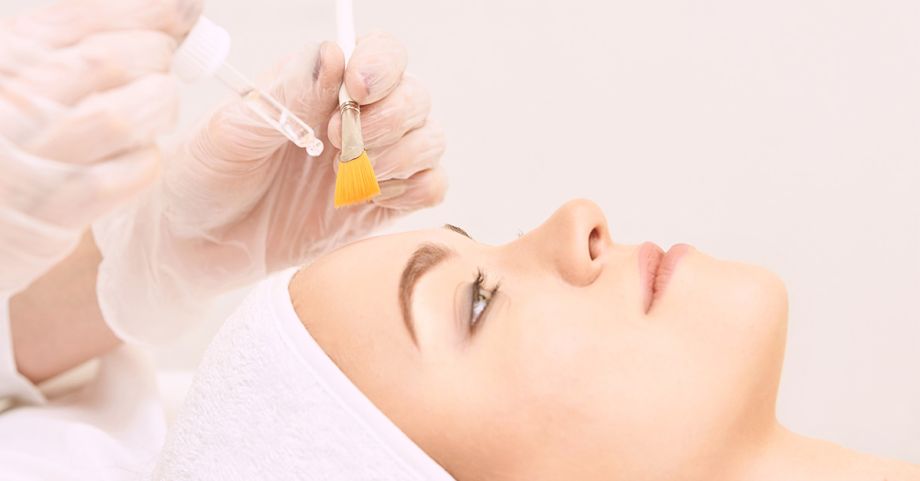
Most people know that medical spas offer their clients a vast array of treatments designed to enhance beauty. They reduce visible signs of aging but may not be familiar with how the different procedures work. The names of some treatments can sound intimidating due to the medical-based devices and formulations they use. Terms such as “laser sculpting,” “microneedling,” “plasma pen,” “dermaplaning,” and “chemical peels” may invoke images of one’s skin getting assaulted by lasers, needles, plasma, scalpels, chemicals, or perhaps other tools that might be used by a mad scientist rather than a medical professional.
The skin care professionals at Naples, Florida-based Tru Glō Medspa understand the trepidation some clients express when offered such invasive-sounding aesthetic treatments. As such, we make a point of educating our clients about what each treatment entails and what they can expect regarding likely outcomes, aftercare, and potential downtime.
This blog represents part of our educational efforts, and this posting will focus on what to expect from a chemical peel. It might sound scary, but trust us, it’s not.
What is a Chemical Peel?
A chemical peel is an acidic solution applied to the skin to exfoliate skin cell layers, which peel and slough off within a few days or weeks, depending upon the strength of the solution. The process removes surface-level skin imperfections, and new skin cell layers are typically fresher looking with fewer visible signs of aging and skin damage.
While this may sound unnatural, know that your body constantly sheds and renews the outermost layer of skin cells. Replacing 30,000 to 40,000 skin cells every day, an amount equal to eight or nine pounds per year. Absent this skin cell renewal, skin damage of all kinds, and visible signs of aging would be much more prominent at an earlier age. Chemical peels serve to accelerate this natural process on the face, neck, and hands.
Benefits of a Chemical Peel
As the protective layer of our bodies, our skin is under constant assault from various environmental stressors and the natural degradation that comes with time’s passing. Our skin is affected daily by the sun’s ultraviolet rays, air- and water-borne pollutants, bug bites, viruses, bacteria, bruising, nicks, cuts, and other stressors. At the same time, the passing years mark it with fine lines, wrinkles, sagging, and age spots. Common skin conditions chemical peels can help treat include:
- Wrinkles
- Fine Lines
- Sagging
- Age Spots
- Sun Damage
- Hyperpigmentation
- Scars
- Enlarged Pores
- Crow’s Feet
- Melasma
- Acne Scars
- Uneven Skin Tone
In addition to correcting existing skin conditions, the skin renewal brought on by chemical peels may help inhibit the emergence of new imperfections and decrease the rate of age-related skin breakdown.
Chemical Peels Offered by Tru Glō Medspa
Naples-based Tru Glō Medspa offers clients three different types of chemical peel treatments to address a client’s specific skin conditions and meet their distinct aesthetic desires. Each of our chemical peels can be modified with different formulations to account for different skin types. Our three chemical peel treatments are:
- Light Peel—This refreshing peel penetrates and exfoliates the thin top layer of skin with a mild formulation of alphahydroxy acids (AHAs). Light peels gently address mild skin conditions and effectively reduce signs of dry skin, mild wrinkles, fine lines, minor acne scarring, and blotchiness.
- Medium Peel—Our medium peel treatments also utilize AHAs, though in more robust formulations that penetrate deeper into the deeper skin layers. Medium peels can help correct scarring, wrinkles, acne uneven pigmentation, and other moderate damage and imperfections.
- Deep Peel—Deep chemical peels can treat extensive skin damage like deep wrinkles, scarring, sagging, sun damage, hyperpigmentation, and pre-cancerous growths. As a transformative treatment that only requires one session, results can last up to 10 years.
What to Expect in the Days After a Chemical Peel
After your chemical peel, your skin will be red, tender, and a bit swollen, with the extent and discomfort dependent upon the type of peel. All three peels can cause dryness, flakiness, discoloration, breakouts, and peeling during the ensuing days and/or weeks after the procedure. As the primary characteristic of the treatment, the peeling usually begins three or four days after the treatment. It would be best to let it happen naturally rather than pull away at any peeling skin.
Light peels cause minimal discomfort and downtime, with clients usually displaying renewed skin within a week. These peels typically cause minor redness and irritation for a day or so. With minimal downtime, clients can safely undergo them every month or so.
As with light peels, medium peels do not cause excessive discomfort. Although you may need a couple of days of downtime. Peeling and swelling can persist for several days. It may take at least a week for your rejuvenated skin to look normal. Clients can safely schedule medium peels every four to six months.
Deep peels can cause moderate discomfort during the week after the procedure, but Tru Glō Medspa provides clients with options and treatment to relieve pain and promote healing. Recovering from a deep peel and the emergence of your renewed skin takes at least two weeks, and you may need a week or two of downtime. Skincare experts recommend that deep chemical peels should only be performed every two to three years.
Consult with Your Naples Med Spa to Learn More
Learn more about chemical peels and how Tru Glō Medspa can best address your unique skin conditions and aesthetic concerns. Contact us today through our website’s contact page, or by calling 239-919-7009.